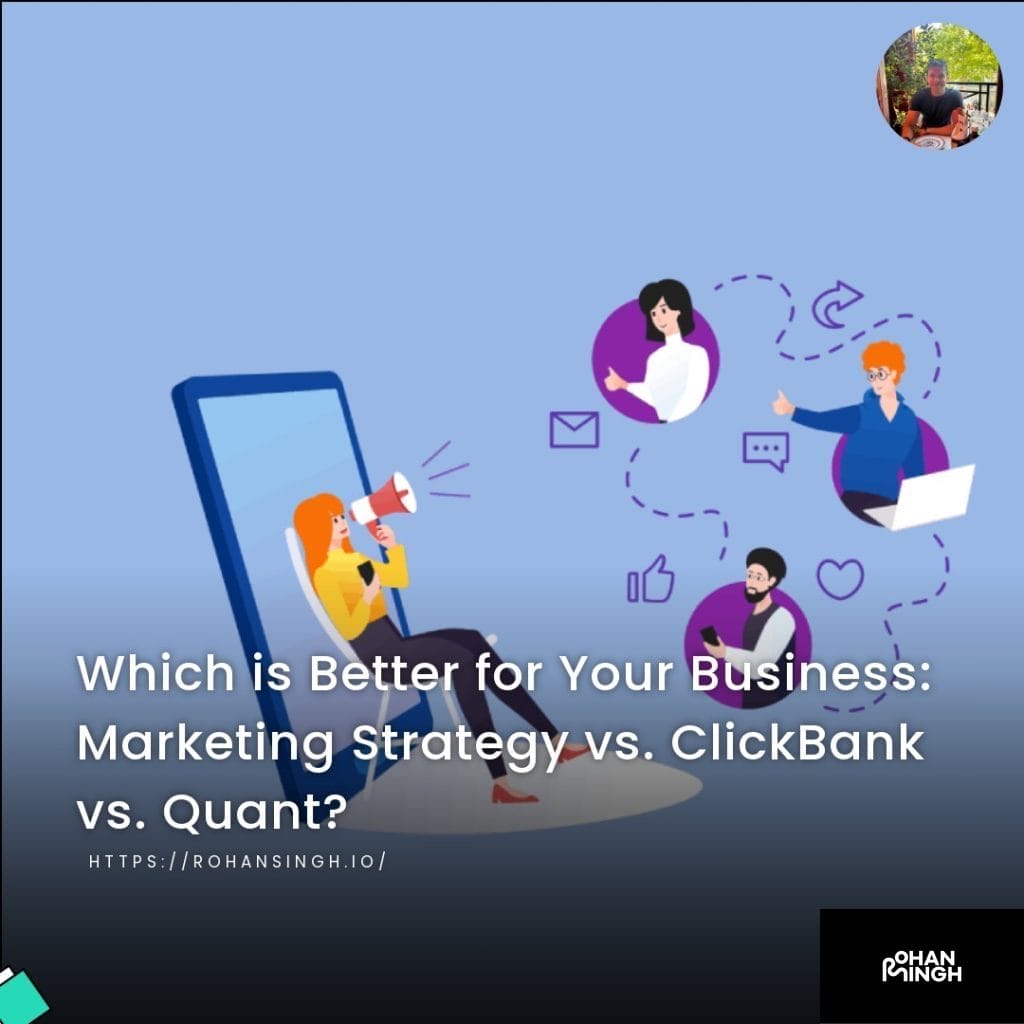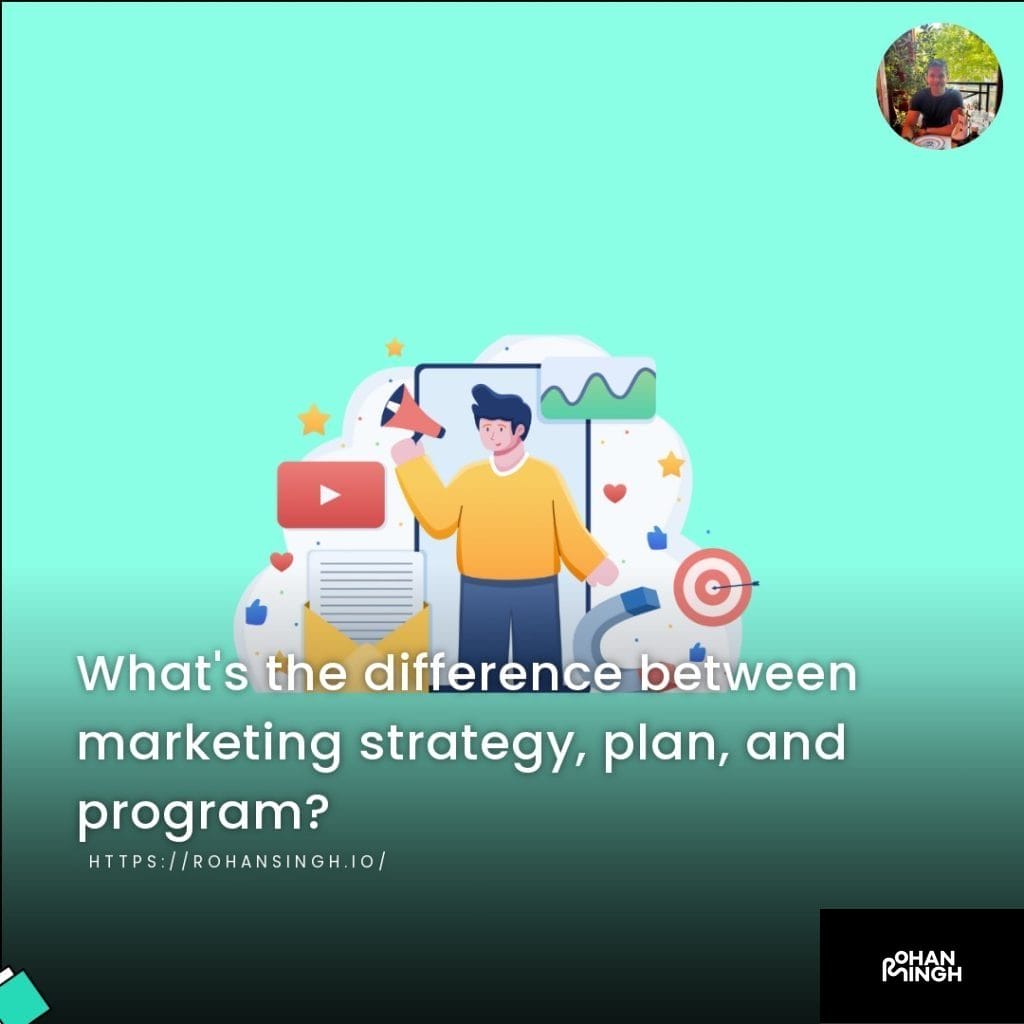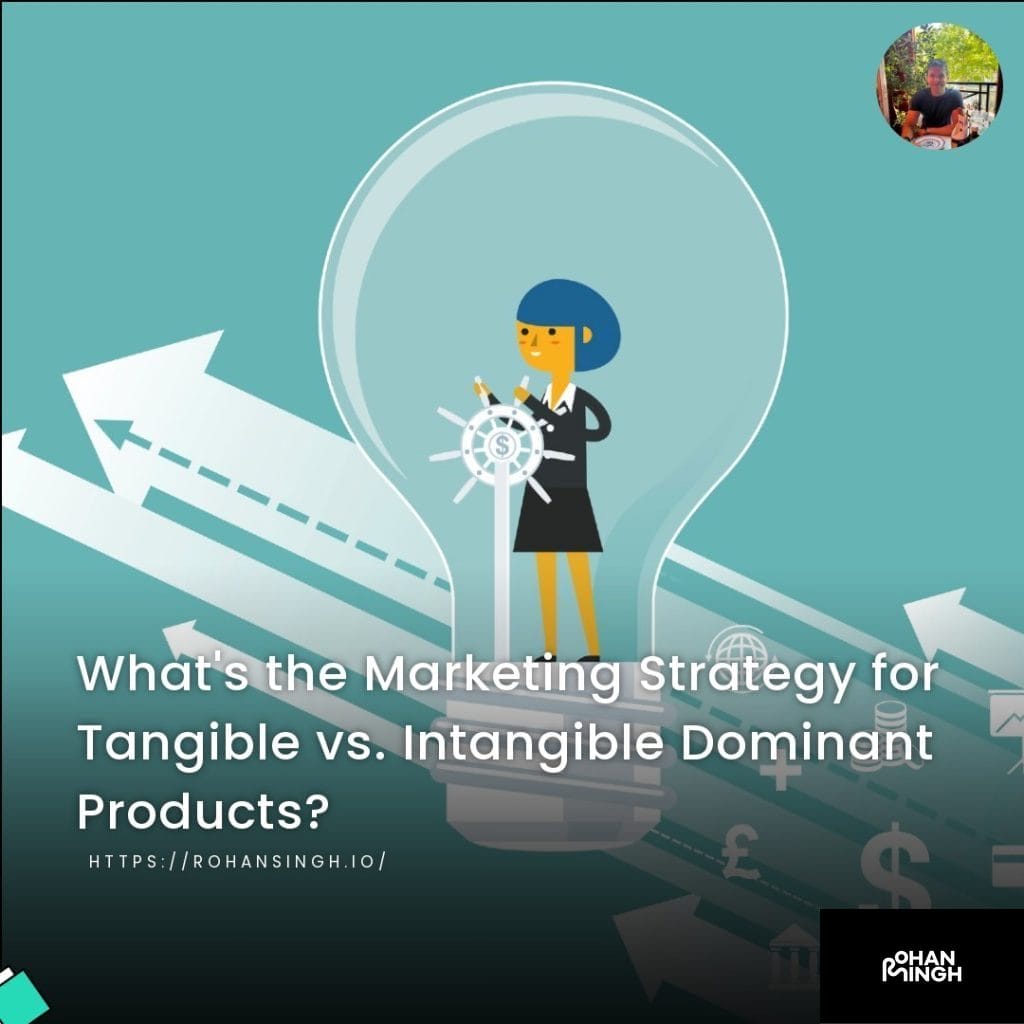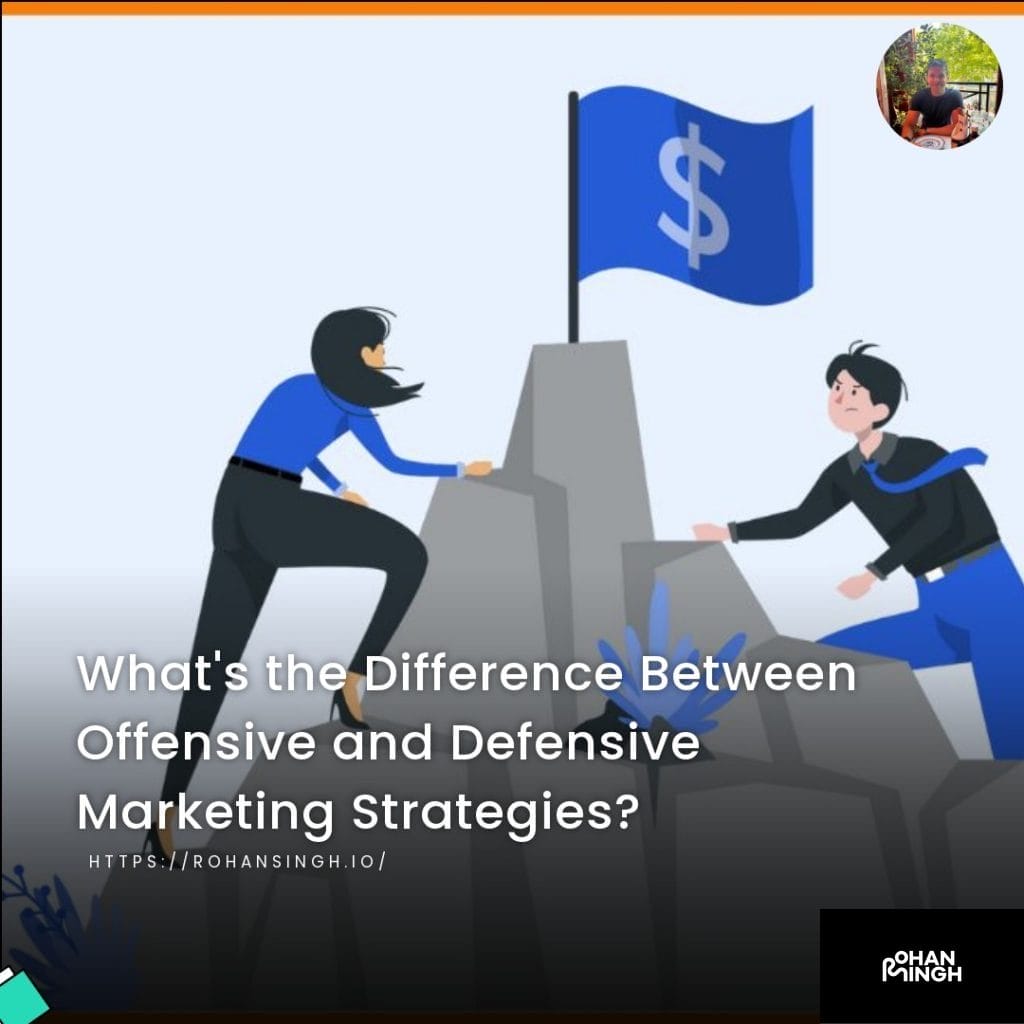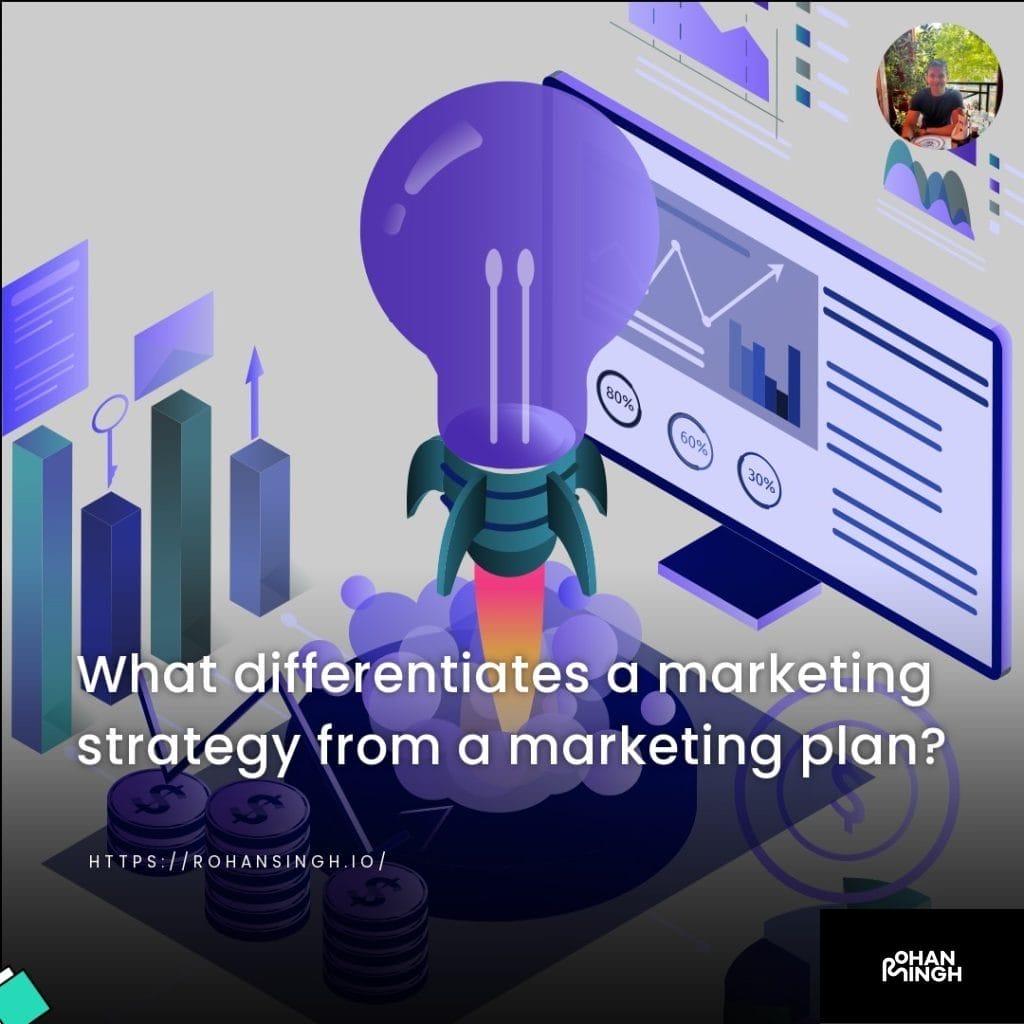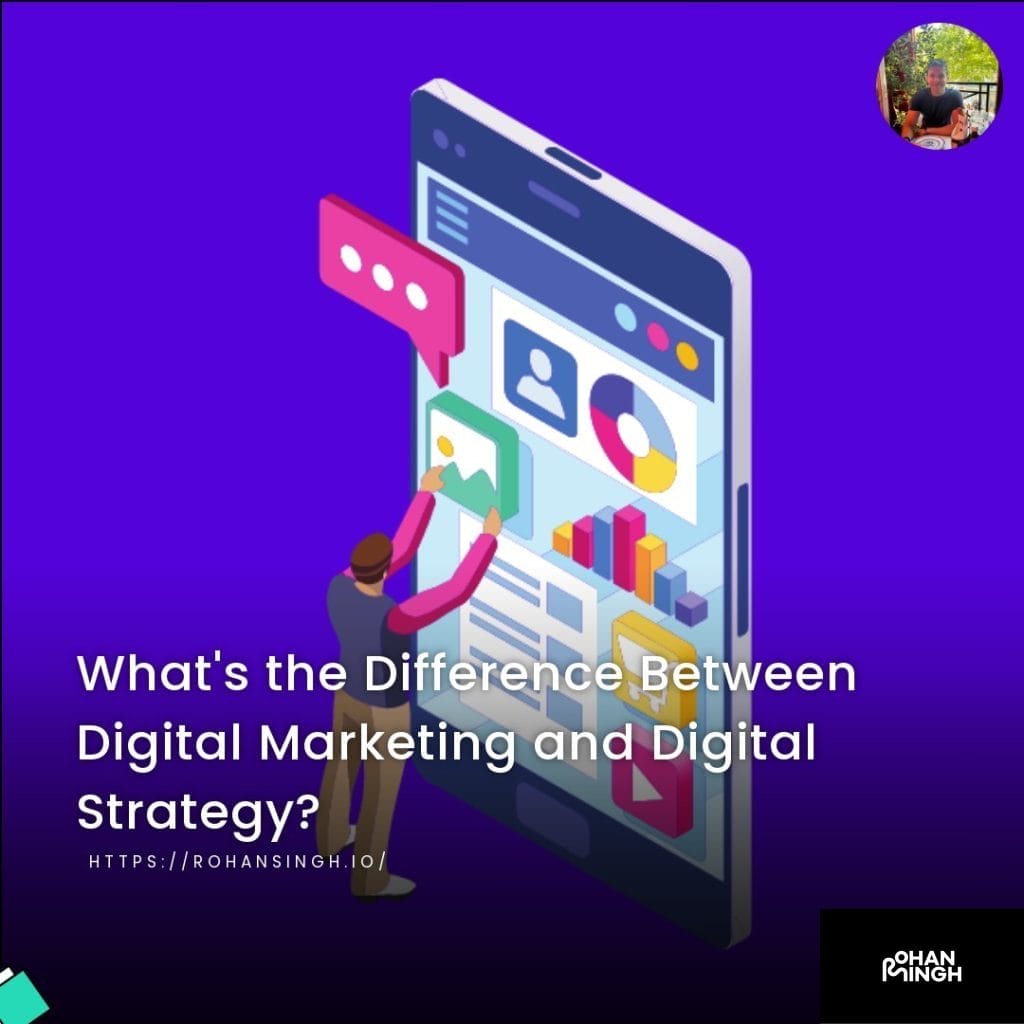What Sets Apart Mattel’s Marketing Strategy for Success?
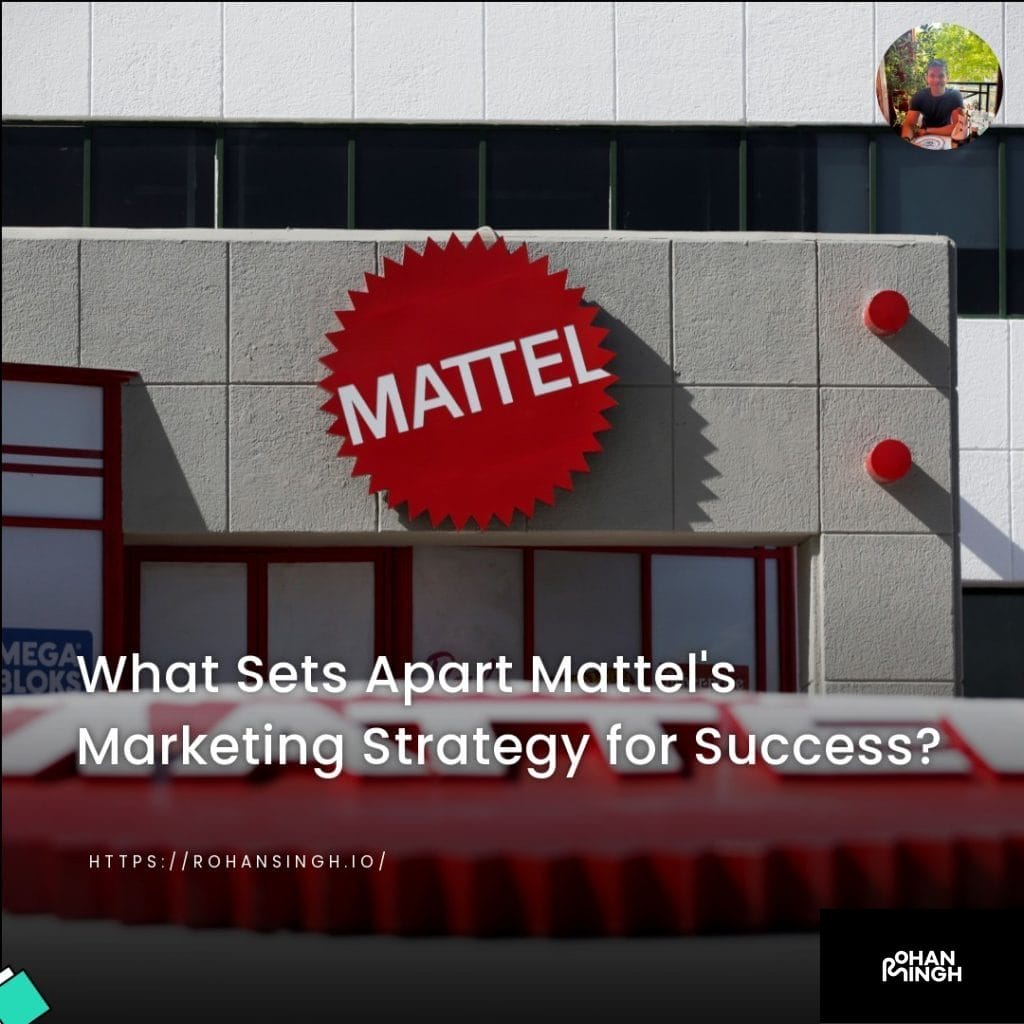
Overview of Mattel's Marketing Strategy
Mattel, the world-renowned toy company, has established itself as a global leader in the industry with its iconic brands and innovative products. The company’s marketing strategy has played a significant role in its success, allowing it to maintain a strong market presence and capture the attention of its target audience. By leveraging the power of marketing campaigns and social media, Mattel has been able to stay relevant in the ever-changing cultural zeitgeist. The company’s commitment to quality content and appealing to the emotional connection that consumers have with their products has been a key driver in building brand loyalty. With a focus on understanding its core customers and market potential, Mattel has been able to effectively position itself in a competitive market and expand its market share. This overview will delve into some of the key strategies that have propelled Mattel to success in the industry.
Table of Contents
ToggleA Brief History of Mattel
Mattel, one of the world’s largest toy companies, has a rich history that spans over 75 years. The company was founded in 1945 by Harold “Matt” Matson and Elliot Handler, who combined their names to create “Mattel.” In its early years, Mattel specialized in wooden picture frames, but it soon diversified its product line to include dollhouse furniture and toys.
However, it was the introduction of the iconic Barbie doll in 1959 that truly catapulted Mattel to success. Barbie quickly became a cultural phenomenon, capturing the imagination of children worldwide and establishing Mattel as a leading toy company. Through strategic marketing campaigns and innovative product development, Mattel continued to dominate the toy industry with hits like Hot Wheels and Fisher-Price Toys.
Over the years, Mattel expanded its reach through acquisitions and partnerships, further solidifying its position in the market. In 1968, the company acquired Fisher-Price, adding beloved brands like Little People and Power Wheels to its portfolio. Mattel also formed partnerships with popular franchises, such as Disney, to create licensed toys based on beloved characters.
Today, Mattel continues to thrive as a global leader in the toy industry. With a focus on innovation and nostalgia, the company consistently introduces new toys and games that capture the hearts of children and adults alike. Mattel’s rich history and commitment to creating quality products have shaped its current position as a trusted and beloved brand in the toy industry.
Let's talk about your future project!
Eager to collaborate on your upcoming endeavor? Let's explore and ignite the potential of your next big idea, shaping a promising future together!
Hot Wheels
Hot Wheels, a cornerstone brand of Mattel’s empire, has been captivating the hearts of children and adults alike for decades. With its fleet of miniature cars and exhilarating race tracks, Hot Wheels has become synonymous with speed, adventure, and pushing the limits of imagination.
Hot Wheels’ success can largely be credited to its innovative marketing strategies that create an emotional connection with its target audience. By tapping into the cultural zeitgeist and understanding the desires of speed enthusiasts, Mattel has been able to create a marketing campaign that resonates with its core customers. Through captivating advertisements, partnerships with renowned car manufacturers, and engaging social media marketing, Hot Wheels has managed to maintain its position as a market leader in the toy industry.
As the world became increasingly digitized, Hot Wheels seamlessly transitioned into the digital entertainment space. By launching video games and engaging with its audience through digital platforms, Hot Wheels not only expanded its market reach but also increased its market share in a highly competitive market. The brand’s ability to stay relevant and cater to the evolving needs of its target market has been crucial in maintaining its position as an iconic brand within the industry.
Overview of the Iconic Brand
Mattel, a global leader in the toy industry, boasts an impressive portfolio of iconic brands that have captured the hearts and minds of generations of children. From the beloved Barbie to the action-packed Hot Wheels, these brands hold immense significance and recognition in the industry. They have become synonymous with quality, creativity, and playfulness, making Mattel a household name around the world.
Barbie, perhaps the most famous of all the Mattel brands, has been an enduring favorite for over six decades. With her ever-evolving fashion styles and empowering message of self-expression, Barbie has cemented herself as a cultural icon. Her influence extends far beyond the toy aisle, sparking conversations about body positivity and gender equality.
Hot Wheels, on the other hand, appeals to speed enthusiasts and adventure seekers of all ages. These miniature cars and exhilarating race tracks have fueled the imaginations of children for generations. Hot Wheels has managed to stay relevant by continuously innovating and partnering with renowned car manufacturers, creating a seamless blend of fantasy and reality.
Other notable brands in Mattel’s repertoire include Fisher-Price, Polly Pocket, and Thomas & Friends, each with its own loyal following and unique appeal. These brands have stood the test of time, demonstrating Mattel’s unparalleled reputation for creating engaging and beloved toys.
With such a rich and diverse range of iconic brands, Mattel continues to capture the imagination of children and adults alike, solidifying its position as a pioneer and leader in the toy industry.
Expansion of the Hot Wheels Lineup
After the tremendous success of the Barbie movie, Mattel seized the opportunity to expand the Hot Wheels lineup and capitalize on the popularity of its iconic brands. Recognizing the potential for cross-promotion, Mattel leveraged the buzz around the movie to diversify its product offerings and capture the hearts of both Barbie and Hot Wheels fans.
With this strategic move, Mattel introduced an array of spin-off products and tie-ins, creating a synergy between the two brands. Collaborations with other companies resulted in limited-edition merchandise that excited collectors and enthusiasts alike. These partnerships not only strengthened the brand’s position in the market but also provided unique and memorable experiences for fans.
The expansion of the Hot Wheels lineup encompassed various categories of products. Alongside the classic die-cast cars, Mattel introduced themed playsets, track sets, and interactive digital experiences. This diversification allowed the brand to appeal to different consumer preferences and reach a broader audience.
By capitalizing on the success of the Barbie movie and strategically expanding the Hot Wheels lineup, Mattel demonstrated its ability to adapt to changing market trends and leverage the strengths of its iconic brands. This expansion not only created new revenue streams but also brought joy and excitement to fans of all ages.
Successful Marketing Strategies for Hot Wheels
Mattel has implemented several successful marketing strategies for its Hot Wheels brand, effectively leveraging both traditional and digital approaches to reach a wider audience and boost sales. One key aspect of their strategy is their use of TV advertisements, magazines, newspapers, and social media to create buzz around the brand. Hot Wheels commercials feature thrilling stunts and colorful visuals that capture the attention of both children and adults. This traditional approach allows them to reach a wide range of consumers and create a sense of nostalgia for those who grew up playing with Hot Wheels.
In addition to traditional marketing channels, Mattel has also embraced digital approaches to engage with its target audience. They have utilized social media platforms to generate hype and build a community around the brand. Through strategic social media marketing campaigns, they have successfully kept Hot Wheels at the forefront of the cultural zeitgeist. By utilizing influencers, engaging content, and interactive experiences, Mattel has managed to generate a significant amount of user-generated content, further amplifying its brand message.
Furthermore, Mattel has effectively utilized sponsorships and brand ambassadors to create a sensation for new products. They have partnered with popular celebrities and influencers who resonate with their target audiences, such as Margot Robbie and Greta Gerwig. These collaborations have not only increased brand visibility but also created an emotional connection between the audience and the Hot Wheels brand.
In recent years, Mattel has also expanded its reach by targeting emerging markets. By analyzing market potential, they have identified regions where Hot Wheels had an untapped market share and implemented strategic marketing campaigns tailored to those markets. They have successfully leveraged their iconic brand and innovative product strategies to penetrate new markets and drive growth.
Overall, Mattel’s successful marketing strategies for Hot Wheels encompass a combination of traditional and digital approaches, utilizing TV advertisements, magazines, newspapers, social media, and sponsorships. By targeting emerging markets and leveraging brand ambassadors, they have kept Hot Wheels at the forefront of the industry and increased their market share and profitability.

Building a Strong Social Media Presence for Hot Wheels
Mattel has successfully built a strong social media presence for its iconic brand, Hot Wheels, through strategic social media marketing strategies and tactics. They have recognized the power of social media in reaching and engaging with their target audience, and have effectively utilized various platforms as part of their marketing mix.
One of the key strategies employed by Mattel is creating engaging and interactive content that resonates with its audience. They understand that Hot Wheels enthusiasts are passionate about the brand, and they leverage this passion to create content that sparks excitement and ignites conversations. They regularly share sneak peeks of new products, behind-the-scenes footage, and interactive challenges to keep their audience engaged and eager for more.
In addition, Mattel has capitalized on the power of user-generated content by encouraging their fans to share their Hot Wheels experiences on social media. By running contests and campaigns that encourage fans to create and share their content, Mattel has not only increased brand visibility but also built an authentic and passionate community around the brand. This organic and user-driven content creates a sense of authenticity and trust among their audience.
Moreover, Mattel has also collaborated with popular social media influencers and partnerships to further amplify their social media presence. By teaming up with influencers who align with the interests and values of their target audience, Mattel has extended its reach and gained access to new communities. These partnerships allow them to tap into the influencer’s followers and engage with a wider demographic.
Overall, Mattel’s strategic approach to social media marketing, engaging content, and partnerships with influencers have played a crucial role in building a strong social media presence for Hot Wheels. It has allowed them to connect with their audience on a deeper level, foster an online community, and keep their brand at the forefront of the cultural zeitgeist.
Barbie Dreamhouse and Barbie Xbox Video Games
Barbie Dreamhouse has been a beloved iconic brand for over six decades, captivating the hearts of girls around the world. To maintain its relevance and market share, Mattel has implemented a compelling marketing strategy for Barbie Dreamhouse. Understanding the importance of staying connected to its core customers, Mattel has leveraged the power of social media marketing and quality content to engage with its target audience. Through creative campaigns, Mattel showcases the Dreamhouse as a symbol of aspiration and imagination, bringing to life the dream world of Barbie. By tapping into the cultural zeitgeist and highlighting the diverse aspects of the Dreamhouse, Mattel creates an emotional connection with its audience, showcasing the dream life they could have with Barbie.
Mattel has ventured into the digital entertainment space by creating Barbie Xbox video games, further expanding the reach and market potential of its iconic brand. With the popularity of video games among girls, Mattel recognized the opportunity to tap into this market and engage with its target audience in a new and immersive way. Through strategic partnerships and collaborations with digital entertainment companies, Mattel has successfully developed video games that align with the interests and preferences of its core customers. These games not only offer an interactive and entertaining experience but also uphold the values and themes that Barbie represents. By leveraging the power of technology and innovation, Mattel continues to position Barbie as a relevant and modern brand, catering to the evolving interests and preferences of its target market.
Launching the Products in the Market
Launching their products in the market is a crucial aspect of Mattel’s marketing strategy. With a focus on standing out in the competitive market, Mattel incorporates unique product designs, features, and packaging to capture the attention of consumers. By offering innovative and eye-catching designs, they create a sense of excitement and desirability around their products, making them stand apart from their competitors. This strategy enables Mattel to create a buzz and generate anticipation among its target audience.
In addition to unique product designs, Mattel understands the importance of considering factors such as quality, variety, brand name, and augmented services in its product strategy. By delivering high-quality products that meet or exceed customer expectations, Mattel builds trust and loyalty with its customers. They also offer a wide variety of products to cater to different preferences and interests, ensuring that they have something for everyone.
Furthermore, Mattel has successfully collaborated with other companies for limited-edition merchandise and tie-ins. These collaborations not only provide additional revenue streams but also reinforce the brand’s relevance and appeal to a wider audience. By partnering with popular brands or leveraging cultural moments, Mattel can tap into new markets and attract new customers to its products.
Through their strategic approach to launching products in the market, Mattel ensures that they remain competitive and can capture the attention of their target audience. With unique designs, a focus on quality, and strategic collaborations, Mattel continues to be a leader in the toy industry.

Targeting Different Age Groups with Different Products
Mattel has a comprehensive marketing strategy that involves targeting different age groups with different products. They understand that children of different ages have unique needs and interests, and they cater to those needs by offering a diverse product line. From toys for infants and toddlers to merchandise for teenagers, Mattel ensures that they have something for every stage of childhood and adolescence.
To cater to infants and toddlers, Mattel offers a range of toys that are designed to stimulate their senses and aid in their development. These toys are made with soft materials, bright colors, and interactive features that engage the little ones and help them learn and grow. As children grow older, Mattel transitions to toys and games that promote imaginative play, creativity, and problem-solving skills.
For older kids and teenagers, Mattel has a variety of products that cater to their changing interests and preferences. They offer licensed merchandise from popular franchises, such as action figures and collectibles, as well as interactive toys and games that incorporate technology and digital entertainment. By constantly adapting their product offerings to match the developmental milestones of their target age groups, Mattel ensures that they remain relevant and appealing to their core customers.
Mattel also keeps a close eye on trends and cultural influences to develop age-appropriate products. They invest in market research and consumer insights to understand what children and teenagers are interested in and use that information to create toys and merchandise that align with their preferences. By consistently providing products that resonate with their target age groups, Mattel establishes an emotional connection with their customers and develops brand loyalty.
In conclusion, Mattel’s marketing strategy involves targeting different age groups with different products. By diversifying their product line and offering age-appropriate toys and merchandise, Mattel ensures that they cater to the specific needs and interests of children at various stages of childhood and adolescence. Through research, development, and a deep understanding of its target audience, Mattel continues to deliver products that engage, entertain, and inspire children and teenagers worldwide.
Utilizing Margot Robbie's and Greta Gerwig's Star Power to Promote the Products
Mattel demonstrated its marketing prowess by capitalizing on the star power of Margot Robbie and Greta Gerwig to promote their products. Recognizing the influence these actresses had on their respective target audiences, Mattel formed collaborations and partnerships with them to create buzz and generate excitement around their brands.
Margot Robbie, known for her roles in blockbuster films, became a brand ambassador for Mattel’s iconic Barbie doll. This collaboration allowed Mattel to leverage Robbie’s widespread popularity and appeal, reaching a wider demographic and reinforcing Barbie’s cultural significance. The partnership extended beyond traditional advertisements, with Robbie actively engaging with fans on social media platforms and sharing her own stories and experiences with Barbie. This authentic connection fostered a sense of relatability and emotional connection between consumers and the brand.
Similarly, Greta Gerwig, an acclaimed filmmaker, was enlisted to bring her creativity and narrative expertise to the development of the “Barbie” movie. This collaboration aimed to revitalize the Barbie brand and cater to a more diverse and modern audience. Gerwig’s involvement lent credibility and artistic integrity to the project, generating significant media attention and anticipation.
Through these strategic collaborations, Mattel effectively harnessed the star power of Margot Robbie and Greta Gerwig to enhance their marketing campaigns and engage consumers in a more meaningful way. These partnerships not only expanded the reach of the brand but also reinforced its relevance and resonance in the cultural zeitgeist. By aligning themselves with high-profile individuals who embody the values and aspirations of their target audience, Mattel successfully created a compelling narrative around their products and fostered a deeper connection with consumers.
Accommodating Cultural Trends in Their Product Strategies
Mattel has demonstrated a keen understanding of cultural trends by incorporating relevant themes and characters from popular movies into their product strategies. By collaborating with Hollywood studios and other companies, they have been able to create limited-edition merchandise that taps into the excitement surrounding these films. This approach not only capitalizes on the entertainment industry as a marketing opportunity but also allows Mattel to bring its iconic characters and stories to life in new and exciting ways.
One example of this strategy is Mattel’s collaboration with the blockbuster film “Barbie,” which featured Margot Robbie as a brand ambassador. This partnership allowed Mattel to leverage the cultural impact of the film and Robbie’s popularity to reach a wider audience and reinforce Barbie’s significance. By incorporating elements from the movie, such as fashion trends or key scenes, into Barbie products, Mattel creates a sense of connection and relevance with consumers who are fans of the film.
Another benefit of this strategy is the increased brand familiarity that Mattel gains by associating its products with popular movies. By aligning themselves with successful films, Mattel taps into the excitement and enthusiasm that fans have for these movies, allowing them to piggyback on the existing hype. This not only increases the visibility of their brand but also helps to establish their toys as must-have items for fans of the film.
Additionally, this approach also benefits Hollywood studios by lowering their risk when it comes to merchandise tie-ins. By partnering with a toy company like Mattel, studios can rely on their expertise in producing high-quality and popular toys, ensuring a positive consumer experience. This allows studios to focus on their core competency of film production while leaving toy manufacturing and marketing to Mattel.
Furthermore, this strategy presents the potential for higher rewards for both Mattel and the studios involved. By capitalizing on the success of a popular movie, Mattel can tap into a large and often passionate fan base, increasing market demand and potentially driving higher sales. Additionally, the limited-edition nature of these collaborations can create a sense of urgency among consumers, leading to higher sales and increased profitability.
In conclusion, by accommodating cultural trends in their product strategies and collaborating with the entertainment industry, Mattel can create merchandise that resonates with consumers on a deeper level. This approach not only increases brand familiarity and market demand but also allows Mattel to tap into the excitement and enthusiasm surrounding popular movies. By capitalizing on the entertainment industry as a marketing opportunity, Mattel can bring their characters and stories to life in new and exciting ways, benefiting both themselves and the studios they collaborate with.

Increasing Market Share with Innovative Advertising Campaigns
Mattel, a leading toy company, has implemented innovative advertising campaigns to increase its market share and enhance brand visibility. One notable campaign was the collaboration between Mattel and the blockbuster film “Barbie,” featuring Margot Robbie as a brand ambassador. This strategic partnership allowed Mattel to leverage the cultural impact of the movie and Robbie’s popularity to reach a wider audience and reinforce Barbie’s significance.
What sets these innovative campaigns apart from traditional advertising methods is their ability to tap into the cultural zeitgeist and create an emotional connection with consumers. By incorporating elements from the movie, such as fashion trends or key scenes, into Barbie products, Mattel was able to create a sense of relevancy and connection with the fans of the film. This approach goes beyond traditional advertising by immersing consumers in the world of Barbie and allowing them to be part of the narrative.
The impact of these innovative campaigns on Mattel’s market share and brand visibility has been significant. By associating their products with popular movies and leveraging the excitement surrounding these films, Mattel has been able to increase visibility, capture consumer attention, and drive demand. These campaigns have helped Barbie maintain its status as an iconic brand and have solidified Mattel’s position in a competitive market. By employing unique and creative advertising methods, Mattel has successfully differentiated itself from competitors and secured a larger share of the toy market.
Leveraging Quality Content to Increase Online Impressions
Mattel understands the power of quality content when it comes to increasing online impressions and engaging with its target audience. By creating compelling and visually appealing content, Mattel can capture the attention of users and encourage them to interact and share their content across various online platforms.
One way that Mattel leverages quality content is through its YouTube channel, where they showcase videos that not only highlight its products but also provide entertaining and educational content. For example, they have a series called “Play, Create, and Explore,” where kids can watch fun DIY projects and challenges using Mattel toys. This kind of content not only engages their core customers but also attracts new users who may be interested in similar activities.
Furthermore, Mattel focuses on creating great experiences and content that people want to watch. By tapping into popular trends and collaborating with influencers, they can create content that resonates with their target audience. For instance, they partnered with popular YouTubers and celebrities to create engaging videos featuring their products. This not only helps to increase their online impressions but also creates a sense of authenticity and relatability for their brand.
Other companies, such as Lego and Disney’s Marvel, have successfully followed a similar path in leveraging quality content to increase online impressions. Lego has created an entire universe around its building blocks through animated movies and video games, while Disney’s Marvel has created a vast cinematic universe that captivates audiences worldwide. These companies understand the importance of creating immersive experiences and producing high-quality content that captures the hearts and minds of their audience.
In conclusion, Mattel’s focus on creating quality content that resonates with their target audience has helped them increase online impressions and engage with their customers in a meaningful way. By continuously delivering great experiences and content that people want to watch, they have been able to stay relevant in an ever-changing digital landscape, just like Lego and Disney’s Marvel.
Feature Film Adaptations of Mattel Brands
In recent years, Mattel has been taking a bold and innovative approach to its marketing strategy by venturing into the realm of feature film adaptations. By bringing its iconic brands to the big screen, Mattel has not only enhanced its brand image but also witnessed a significant boost in market performance. The release of these movies has proven to be a game-changer for the company, allowing them to tap into new audiences and resonate with both children and adults alike.
One notable example is the highly anticipated Barbie movie set to hit theaters in 2023. This film has generated immense excitement and anticipation among fans worldwide. With Margot Robbie attached as both producer and star, the Barbie movie promises to be a captivating cinematic experience that will breathe new life into the beloved fashion doll. By embracing the power of storytelling and leveraging the popularity of Margot Robbie, Mattel has strategically positioned itself to captivate audiences and revitalize the Barbie brand.
This success opens a world of opportunities for Mattel to explore new horizons and extend the reach of its brands beyond traditional toy aisles. The feature film adaptations allow the company to create emotional connections with consumers on a whole new level, establishing a deeper bond and expanding its market potential. By translating their beloved toys into compelling cinematic experiences, Mattel demonstrates its ability to adapt to the changing landscape of the toy industry and thrive in a competitive market.

Final Thoughts
In conclusion, Mattel’s marketing strategy has proven to be a force to be reckoned with in the toy industry. By capitalizing on the cultural zeitgeist and leveraging the power of storytelling through feature film adaptations, Mattel has successfully breathed new life into its iconic brands, such as Barbie. The upcoming Barbie movie, with Margot Robbie at the helm, is a testament to their commitment to innovation and their understanding of their target audience. With a deep understanding of its core customers and a focus on quality content, Mattel has been able to create an emotional connection with consumers and stay relevant in a competitive market. As they continue to evolve their marketing strategies and explore new avenues for growth, it will be exciting to see what Mattel has in store for the future.
FAQs
What is Mattel's target market?
Mattel’s target market primarily consists of children and their parents. The company designs and manufactures toys, dolls, and games for various age groups, from infants to teenagers. Their iconic brands like Barbie, Hot Wheels, and Fisher-Price cater to different interests and demographics within this target market. Mattel understands the importance of staying relevant in today’s competitive market and continuously adapts its marketing strategies to appeal to evolving preferences and trends.
What sets Mattel apart from its competitors?
One of the key factors that differentiate Mattel from its competitors is its extensive lineup of iconic brands. The company has leveraged the popularity and recognition of brands like Barbie and Hot Wheels to establish a strong market presence. Additionally, Mattel focuses on creating emotional connections with its customers by offering quality products that inspire creativity and play.
How does Mattel market its products?
Mattel employs a multi-faceted marketing approach to promote its products. The company utilizes various channels, including television, digital advertising, social media marketing, and partnerships. Mattel also collaborates with popular personalities and franchises to create marketing campaigns that resonate with their target audience. These collaborations, whether with actresses like Margot Robbie or partnerships with video game companies, help to generate buzz and reach wider audiences.
What are some of the key marketing strategies used by Mattel?
Mattel employs several effective marketing strategies to maintain a competitive edge and drive its success. These strategies include creating engaging and shareable content, developing innovative product features, and staying attuned to current cultural trends. The company also invests in market research to understand consumer needs and preferences, allowing them to tailor their product strategies accordingly. By consistently delivering products that appeal to their core customers, Mattel has been able to maintain a significant market share and generate strong financial performance.
Overall, Mattel’s marketing strategy focuses on building strong connections with its core customers, staying ahead in a highly competitive market, and continuously adapting to changing trends and preferences.
What is Mattel's strategy?
Mattel’s strategy revolves around three key pillars: innovation, comfort, and diversification. With a relentless focus on these elements, Mattel has successfully positioned itself as a leader in the global toy industry.
In terms of innovation, Mattel constantly pushes the boundaries of toy design and development. They invest heavily in research and development to create products that are interactive, educational, and engaging. This innovation is evident in their diverse portfolio of brands, which includes iconic names like Barbie, Hot Wheels, DC Universe, Masters of the Universe, and Star Wars. Each brand caters to different age groups and interests, ensuring that Mattel has a toy for every child’s imagination.
Comfort is another crucial aspect of Mattel’s strategy. They understand the emotional connection that children have with toys and ensure that their products provide a sense of security and familiarity. By creating toys that are both entertaining and comforting, Mattel has built a strong bond with its customers.
Diversification is a key component of Mattel’s strategy. They have expanded their offerings beyond physical toys to include films, TV content, digital games, and even streaming. This diversified approach helps them reach consumers through various channels and tap into the growing demand for digital entertainment. One notable success in this area is the Barbie movie, which showcases Mattel’s ability to create compelling content beyond traditional toys.
By following these strategic pillars, Mattel has established itself as a powerhouse in the toy industry, constantly adapting to changing trends and capturing the hearts of children worldwide.
How does Mattel market its products?
Mattel adopts a multifaceted approach to marketing its products, combining both traditional and digital strategies. In terms of traditional marketing, they utilize various channels such as TV advertisements, magazines, and newspapers to reach a wide audience. These platforms allow Mattel to showcase its diverse range of toys and create brand awareness among consumers.
However, the company also recognizes the importance of digital marketing in today’s rapidly evolving landscape. They leverage social media platforms like Facebook, Instagram, and YouTube to engage with their target market and build a strong online presence. Through creative and captivating content, Mattel establishes an emotional connection with its audience, generating excitement and interest in its products.
Additionally, Mattel strategically partners with apparel brands and sponsors events to further promote their products. Collaborations with fashion brands allow them to extend their reach and tap into new markets. By associating their toys with popular brands and events, Mattel enhances their brand reputation and visibility.
Moreover, Mattel has placed a significant focus on emerging markets. Recognizing the potential for growth in countries like China and India, they have tailored their marketing strategies to cater to the specific needs and preferences of these regions. Whether it’s through the localization of their campaigns or forging partnerships with local influencers, Mattel ensures that their products resonate with consumers in these emerging markets.
Overall, Mattel employs an aggressive marketing approach that combines traditional and digital strategies, sponsorships, and a focus on emerging markets to effectively market its products and maintain a strong brand presence in the ever-competitive toy industry.
What are the 4 marketing strategies?
Mattel utilizes four key marketing strategies to effectively promote its products and increase its market share. First and foremost, they employ aggressive marketing tactics through various channels, both traditional and digital. By adopting this approach, Mattel ensures that its brand and products remain visible and top-of-mind for consumers.
One of the traditional marketing channels they utilize is television advertisements. Mattel strategically selects prime time slots and popular shows to showcase their toys, capturing the attention of their target audience. In addition, they invest in magazine and newspaper ads to reach a wider demographic and create buzz around their products.
However, Mattel also recognizes the importance of digital marketing in today’s digital age. They actively engage with their audience on social media sites like Facebook, Instagram, and YouTube, leveraging the power of these platforms to create excitement and generate buzz around their products. Furthermore, they optimize their website by featuring their latest toy offerings, sneak peeks, and promotions, offering a seamless and immersive online shopping experience for their customers.
Through the implementation of its multi-channel marketing approach, Mattel ensures that its products are highly visible to its target audience, allowing them to connect with existing customers and attract new ones. By utilizing both traditional and digital marketing strategies, they can maximize their reach and ultimately drive sales growth.
What is Mattel's target market?
Mattel’s target market encompasses a wide range of demographics, with a focus on children and their parents. The company aims to reach children between the ages of 3 and 12, who are the primary consumers of their toys. By understanding the specific age groups within this target market, Mattel can tailor their marketing strategies to cater to the different interests and developmental needs of children at different stages.
Consumer behaviors play a crucial role in defining Mattel’s target market. The company recognizes that children have a strong affinity towards iconic brands and characters, and they leverage this by creating toys based on popular franchises like Barbie, Hot Wheels, and Thomas & Friends. Mattel capitalizes on children’s desires for imaginative play, collectibles, and interactive experiences to create products that resonate with their target audience.
In addition to children, Mattel also targets parents as an influential consumer group. They understand that parents value educational toys, durability, and safety when making purchasing decisions for their children. Mattel’s commitment to producing high-quality and safe toys creates trust and reassurance among parents, enabling them to make confident buying choices.
Overall, Mattel’s target market consists of children aged 3-12 and their parents. By catering to the specific demographics, consumer behaviors, and interests within this market, Mattel has been able to establish itself as a leading toy company globally.
What is Mattel's competitive advantage?
Mattel has a strong competitive advantage in the toy industry due to its ability to differentiate itself from its competitors. One key aspect that sets Mattel apart is its extensive portfolio of iconic brands and characters, such as Barbie, Hot Wheels, and Thomas & Friends. These beloved franchises have stood the test of time, creating a deep emotional connection with consumers and establishing Mattel as a trusted name in the industry.
Another element that contributes to Mattel’s competitive advantage is its focus on innovation and product strategies. The company is constantly introducing new and innovative toys that capture the attention of both children and their parents. By staying at the forefront of market trends and consumer demands, Mattel can offer unique and exciting products that set it apart from the competition.
Additionally, Mattel’s commitment to quality and safety further differentiates the company from its competitors. Parents value toys that are durable and safe for their children, and Mattel’s strong emphasis on these aspects instills confidence in consumers. This not only helps in building brand loyalty but also helps in gaining a competitive edge by attracting new customers.
Overall, Mattel’s competitive advantage is rooted in its ability to differentiate itself through its iconic brands, innovative products, and commitment to quality. These unique selling propositions not only contribute to the company’s market share but also help in maintaining its position as a leader in the industry.
How is Mattel so successful?
Mattel’s success as a toy and doll manufacturing brand can be attributed to several key factors. One of the main reasons behind their success is their unwavering focus on innovation. Mattel is constantly pushing the boundaries of creativity, introducing new and exciting toys that captivate children’s imaginations. This commitment to innovation allows them to stay ahead of market trends and cater to changing consumer demands, ensuring they remain relevant in an ever-evolving industry.
Another factor that contributes to Mattel’s success is its emphasis on providing comfort and relatability in its product strategy. They understand that children not only want engaging toys but also ones that are comfortable to play with. Mattel pays attention to ergonomics and designs its toys to be easy to handle and interact with, enhancing the overall play experience. Additionally, they strive to make their toys relatable by incorporating diverse body types, skin tones, and cultural representation. This inclusive approach allows children from all backgrounds to find toys that resonate with them, fostering a strong emotional connection to the brand.
Furthermore, Mattel’s diversification into films, TV content, digital games, and online streaming has played a significant role in its success. By expanding beyond traditional toy manufacturing, they can reach a wider audience and tap into different mediums of entertainment. This not only strengthens their brand presence but also allows them to adapt to the preferences of today’s digitally savvy consumers. Overall, Mattel’s success can be attributed to its focus on innovation, comfort, consumer relatability, and its ability to adapt to the changing landscape of the industry.
Who is Mattel's biggest competitor?
One of Mattel’s biggest competitors in the toy industry is Hasbro. Hasbro is a multinational toy and board game company that has established a strong presence in the market. In terms of market share, Hasbro has consistently been a formidable rival to Mattel, with both companies competing for a substantial portion of the toy market.
Hasbro offers a diverse range of products, including popular brands such as Monopoly, Transformers, Nerf, and My Little Pony. They have successfully tapped into various segments of the toy industry, providing options for different age groups and interests. This wide array of product offerings allows Hasbro to cater to a broader target audience and capture a larger market share.
In terms of strategies, Hasbro employs both direct and indirect marketing strategies. They have strong partnerships with popular franchises such as Marvel, Star Wars, and Disney, allowing them to capitalize on the success of blockbuster movies and TV shows. This enables them to create a buzz by incorporating these beloved characters into their toy lines. Hasbro also leverages social media marketing and influencer collaborations to engage with their target audience and create excitement around their products.
Hasbro’s strength lies in its ability to consistently innovate and adapt to the changing trends in the toy industry. They have a strong track record of introducing new and exciting products that resonate with consumers. However, one weakness that Hasbro faces is the intense competition in the toy market. With Mattel as their biggest competitor, both companies constantly strive to outdo each other in terms of product quality, marketing campaigns, and market share.
Which is Better for Your Business: Marketing Strategy vs. ClickBank vs. Quant?
Rohan Singh | April 22, 2024 | Acquisition Which is Better for Your Business: Marketing Strategy vs. ClickBank vs. Quant? Definition of Marketing Strategy Marketing strategy is a crucial aspect of any business’s growth and success. It involves the overall plan and approach used to achieve marketing objectives and attain a competitive advantage in the […]
What’s the difference between marketing strategy, plan, and program?
Rohan Singh | April 21, 2024 | Retention What’s the difference between marketing strategy, plan, and program? Definition of Marketing Strategy, Plan, and Program A marketing strategy is the big-picture plan that guides all of your marketing efforts. It is a long-term approach that outlines your overall goals and objectives, and how you plan to […]
What’s the Marketing Strategy for Tangible vs. Intangible Dominant Products?
Rohan Singh | April 20, 2024 | Acquisition What’s the Marketing Strategy for Tangible vs. Intangible Dominant Products? Definition of Tangible and Intangible Assets In the world of marketing, understanding the difference between tangible and intangible assets is crucial for developing an effective marketing strategy. Tangible assets refer to physical, material possessions that can be […]
What’s the Difference Between Offensive and Defensive Marketing Strategies?
Rohan Singh | April 19, 2024 | Acquisition What’s the Difference Between Offensive and Defensive Marketing Strategies? What is Offensive Marketing Strategy? An offensive marketing strategy is a proactive approach taken by businesses to gain a competitive advantage in the market. It involves targeting the weaknesses of competitors and exploiting them to drive business growth. […]
What differentiates a marketing strategy from a marketing plan?
Rohan Singh | April 18, 2024 | Retention What differentiates a marketing strategy from a marketing plan? Marketing strategy and marketing plan are often used interchangeably, but they are not the same thing. A marketing plan is a comprehensive document that outlines what needs to be done to achieve specific marketing objectives. It is a […]
What’s the Difference Between Digital Marketing and Digital Strategy?
Rohan Singh | April 17, 2024 | Acquisition What’s the Difference Between Digital Marketing and Digital Strategy? What is Digital Marketing? Digital marketing refers to the use of various digital channels and strategies to promote products, services, or brands to a target audience. In today’s fast-paced and technology-driven world, digital marketing has become a crucial […]
Similar articles about Acquisition Strategy:
Ready to Plan Your Dream Trip with ChatGPT Vacation Planner?, Want to Experience the Magic of Third-Party ChatGPT Plugins?
How can Efficient Project Management Boost Your Success?, Looking to Boost Your YouTube Views? Use ChatGPT for Top-Notch Video Optimization!, Are You Leveraging SEO Audits to Win More Clients?, Ever Thought of Starting an AI Career? Discover How Today!, Can SEO Propel Your Store to 1 Million Monthly Visitors?, How Can Google Bard Supercharge Your SEO Content Strategy?
Which is the Best AI Chatbot? A Head-to-Head Comparison of ChatGPT, Claude 2, Bing Chat, and Google Bard, Eager to Multiply Local Business Reviews from Travelers?, Want a Game-Changer in SEO? Have You Tried AI and Chrome Extensions Yet?, Can AI-Powered Growth Spark Your Business Acceleration and Digital Transformation?, Ready to Achieve SEO Mastery and Stand Out in the Digital World?
Ready to Dominate the Future? How Can You Kickstart Your AI Data Science Career Today?, Want to Dominate Google SERP? Learn How to Supercharge Your Content Strategy!, Have You Explored the ChatGPT Android App Yet?, Ready to Supercharge Your Business? Harness the Power of Always-On PPC Strategy Now!
Are You Choosing the Right Digital Agency for Your Business? Discover the 5 Key Considerations!, How Can AI Marketing Tools Transform Your Social Media Career?, How Can You Dominate YouTube Rankings with SEO in 2023?
Struggling with Competitive Organic Keywords? Try Our Advanced Keyword Domination Strategy!, Want to Dominate Google Page Ranking? Discover the Secrets Here!, Can You Transform Unexpected Publicity into Opportunity with PPC?
Want to Create High-Converting Emails Fast? Have You Tried AI Copywriting & ChatGPT?, How Can You Thrive in the AI Era? A Guide to AI Survival, Want to Dominate Google’s First Page? Discover the Essential SEO Ranking Factors, How to Implement Generative AI Tools Safely and Ethically? Navigating the Ethical AI Implementation Quandary
Ready to Scale Your Career? How to Learn Growth Marketing in 6 Transformative Steps, Ready to Launch Your Career? How to Land Your First Digital Marketing Job: A Must-Read Guide for Freshers!, Want to Safeguard Your Paid Search Campaigns? Discover Proven Strategies Here!
Looking to Boost Your WordPress SEO with AI? Here are 12 Tools You Can’t Miss!, Want to Boost Your Google Rankings? Master SEO Strategies to Hit #1 Now!, How Can AI SEO Revolutionize Your Online Strategy?, Are Your High Schoolers Ready for the AI Wave?, How Can You Achieve Perfect SEO Harmonization?, Ready to Ignite Niche Buzz? Learn How to Fuel Demand!, Ready to Supercharge Your Digital Marketing Agency’s Growth?,
Can ChatGPT Elevate Your PPC Strategy?
Ready to Dominate Digital Marketing in 2024 Using AI?, Want the Secret to #1 Rankings with SEO Web Design?, Ready to Break Language Barriers with Google Bard?, Ready to Boost Your Cleaning Business via Google Ads with Mcelligot?
How Can You Master Google Analytics 4 Quickly?, How Can SEO Mastery Elevate Your Brand’s Future?, Want to Boost Your SEO in 2023? How Can Guest Posting Help?, Want to Top Google’s Charts? How Can the ChatGPT SEO Hack Propel You?
Want the Best Visibility for Your Videos? How Does Video SEO Upload Make a Difference?, How Can You Improve Your Video’s Rank with YouTube SEO Tips?, How Can SEO be Your Ultimate Tool for Generating Leads Forever?, How Can SEO Boost Elevate Your Ranking and Conversion Rates?
How Can Digital Marketing Supercharge College Enrollment?, How Can SEO Mastery Ensure Endless Lead Generation?, How Can You Craft an AI-Ready Resume for Modern Recruitment?, How Does Venmo’s Marketing Strategy Drive Success?
How Can an Effective CEO Branding Strategy Elevate Your Business?, What Makes Doritos’ Marketing Strategy a Winning Formula?, How Does IKEA’s Marketing Strategy Revolutionize Home Furnishing?
What Sets Apart Samsung’s Advertising Strategy for Success?, How Does Nintendo’s Marketing Strategy Revolutionize Gaming?, How Does Bank of America’s Marketing Strategy Drive Success?
How Does Nestle’s Marketing Strategy Drive Business Growth?, What differentiates Nike and Adidas marketing strategies?, What differentiates a Go-to-Market Strategy from a Marketing Strategy?, What are the marketing strategies of Amazon and Flipkart?
What distinguishes a pull strategy from a push strategy in marketing?, What are the marketing strategies of Pepsi and Coke?
What distinguishes a Chief Strategy Officer from a Chief Marketing Officer?, What sets apart a marketing strategy from a sales strategy?
What are the marketing strategies of Colgate and Pepsodent?, What differentiates marketing research from marketing strategy?, Examples of marketing strategy and tactics, What is an effective marketing strategy for car dealers?
How does Nike’s marketing strategy drive its success?, How does Nike execute its international marketing strategy?, What’s the secret behind an effective hot sauce marketing strategy?, What drives Amazon’s powerful marketing strategy?
How can an innovative marketing strategy drive business growth?, What is Nissan’s effective advertising strategy?, What are the differences between one-to-many and one-to-one marketing strategies?, What sets apart big business and small business marketing strategies?
What differentiates Amazon’s marketing from its business strategy?, How can small businesses choose between global marketing standardization and adaptation?, Which platform offers the best marketing strategy: YouTube, Facebook, or Instagram?, How does Nike’s marketing strategy compare to Reebok’s?
Which marketing strategy is better: Deluxe or Premium?, What marketing strategy suits tangible vs intangible dominant products?, Guerilla marketing vs bootstrap marketing: Which is more effective?, Which is better: Niche marketing or concentrated marketing?
What are the differences between undifferentiated, differentiated, and concentrated marketing strategies?, What was the marketing strategy for Mayweather vs. McGregor?, What distinguishes the marketing strategies of Suzuki and Honda motorcycles?, Which is more effective: Regional or national marketing strategy?
What differentiates global marketing strategy from a multidomestic strategy?, Which marketing strategy is ideal for tangible vs. intangible dominant products?, How does Pepsi’s marketing strategy compare to Coca-Cola’s?, When is it appropriate to use differentiated marketing versus a mass market strategy?, What sets apart the marketing strategy for services from products?, How do HP and Dell differ in their marketing strategies?
How do PlayStation and Nintendo differ in their marketing strategies?, How do Timex and Rolex differ in their marketing strategies?, What is the purpose and focus of a social marketing strategy?, How does Facebook’s marketing strategy compare to Google’s?, When to choose concentrated marketing strategy over differentiated marketing?, How does Lowe’s marketing strategy compare to Home Depot’s?
Is it better to use multiple brand names or one brand name in your marketing strategy?, Which is more effective: marketing strategy with coupons or email campaigns?, What sets Verizon, T-Mobile, and AT&T apart in their commercial marketing strategies?,What Sets Apart Global Marketing Strategy from US Marketing Strategy?
Multinational vs. Transnational Marketing Strategy: What’s the Difference?, What’s the Distinction: Advertising vs. Marketing Strategy? Uncover the Differences., What Are the Advantages of Centralized and Decentralized Marketing Strategies?
What’s the Difference Between Guerrilla and Bootstrap Marketing Strategies?, How Do Pepsi and McDonald’s Differ in Marketing Strategies?, What Differentiates a Marketing Strategy from Tactics Deck?, What Sets Apart Suzuki and Honda Marketing Strategies?, How Does a Vision Statement Differ from a Marketing Strategy?,What’s the Difference Between Concentrated and Undifferentiated Marketing Strategies?
How Do Microsoft and Apple Differ in Marketing Strategies?,What Sets Apart the Marketing Strategies of Xbox One and PS4?,What Sets Apart Li Ning and Adidas Marketing Strategies?, How Do Pepsi and Coke Differ in Marketing Strategies?, How Do Distribution Strategy and Marketing Strategy Intersect?, What Sets Apart Global and Domestic Marketing Strategies?, What Makes an Effective Marketing Strategy for Consulting Services vs Operations?, What’s the Difference Between a Digital Marketing Plan and Digital Strategy?
How Does Marketing Strategy Impact Channel Selection? ,How Do Boeing and Airbus Differ in Their Marketing Strategies?, What is the Difference Between Corporate and Marketing Strategy?,What can we learn from Walmart’s global vs marketing strategy case study?, What distinguishes General Motors’ marketing strategy from Ford’s?, What are the differences in marketing strategies between McDonald’s and Burger King?, What is the difference between marketing and commercial strategy?, What distinguishes Home Depot and Lowe’s marketing strategies?,
How does marketing strategy differ for small businesses vs. big businesses?,What sets IKEA’s marketing strategy apart from competitors?, What are the marketing strategies of Nestle and Cadbury? ,What Sets Apart Puma and Adidas Marketing Strategies?, What’s the Distinction Between Operational and Marketing Strategy?,
What Differentiates Marketing Strategy Text and Cases International Edition from US?, What Differentiates Marketing and Operational Strategies for Nonprofit Startups?,
What are the differences between Intel and AMD’s marketing strategies?, What Sets Apart Nokia and Samsung Marketing Strategies?, What’s the Difference Between Marketing Plan and Strategy for Therapists?, What Sets Apart Wendy’s, McDonald’s, and Burger King Marketing Strategies?
What’s the Difference Between Single Country Marketing and Global Marketing Strategy?, What Sets Apart Marketing Strategy from Sales Strategy?, What Differentiates Pizza Hut and Domino’s Marketing Strategies?, What’s the Distinction Between Channel Strategy and Marketing Strategy?, What Are the Essential Steps in Developing a Marketing Strategy?
What Makes Coca-Cola’s Marketing Strategy Successful?, What Sets Apart Mattel’s Marketing Strategy for Success?, What Is the Key to Goodwill Marketing Strategy?, What’s the Ideal Marketing Strategy for Senior Living Communities?, How Do You Formulate an Effective Marketing Strategy?, What Are the Four Steps to Designing a Customer-Driven Marketing Strategy?, What Makes UFC’s Marketing Strategy a Knockout Success?, How to Develop an Effective Marketing Strategy for a Consulting Firm?
What’s the Winning Marketing Strategy for Car Dealerships?, What Are the Four Steps to Designing a Customer-Driven Marketing Strategy?, What Differentiates Marketing Strategy from Corporate Strategy?, How Do Marketing Planning and Strategy Differ in Demographics vs Psychographics?, What distinguishes a Content Strategy from a Content Marketing Strategy?, Blue Ocean Strategy vs. 22 Immutable Laws of Marketing: Which Approach Drives Business Success?, Are digital marketing strategies superior to traditional ones?, What are the differences between inbound and outbound marketing strategies?, What Sets Apart Digital Marketing Strategy from Social Media Strategy?
What Sets Apart Marketing Strategy and Marketing Campaign?, How Did Uber Implement Their Growth Strategy?, What’s the difference between a digital marketing strategy and a social media strategist?, What Sets Apart Two-Sided and One-Sided Fast Food Marketing Strategies?, What’s the Distinction Between Marketing Product Manager and Marketing Strategy Manager?,
How Did Airbnb Execute Their Growth Strategy?, What differentiates a marketing strategy from a tactic?, What makes an effective museum marketing strategy?, What are the differences between traditional and digital marketing strategies?, How Do Advertising Objectives Align with Marketing Strategy Planning?, What Sets Apart Marketing and Operational Strategies for Startups?, What Differentiates Web Strategy from Digital Marketing Strategy?, What’s the Difference Between Project Management and Marketing Strategy?, How do Absolut and Smirnoff vodka differ in their marketing strategies?, How does marketing strategy differ for services versus operations?
Which Dominates: Amazon vs. eBay Marketing Strategy? Unveiling the Differences., How does a global marketing strategy balance adaptation and standardization decisions?, What Differentiates a Marketing Plan, Strategy, and Campaign?, What Are Canon and Nikon’s Marketing Strategies?, How does a content strategy differ from a marketing plan?, What sets marketing apart from strategy?,What sets apart a total web strategy from a web marketing strategy?, How do business strategy and marketing align for success?
What Are the Steps to Develop a Customer-Driven Marketing Strategy?, How Do B2C and B2B Marketing Strategies Differ?, What Sets Apart Marketing Strategy from Marketing Mix?, What’s the Difference Between Business and Marketing Strategy?, How does a Content Strategy differ from a Marketing Strategy?,
How Does the Good vs Evil Dynamic Impact Sex Sells Marketing Strategy?, How Does a Marketing Plan Differ from a Competitive Strategy?, Which marketing strategy works best for videos: Facebook or YouTube?, How Did Tata Communications Implement an Effective Emerging Markets Growth Strategy?,
How do Samsung and Sony differ in their 3D TV marketing strategies?, What Differentiates International and Domestic Marketing Strategies?, What’s the Distinction Between Commercial Strategy and Marketing Strategy?, How do Apple and Samsung’s marketing strategies compare?, What is the difference between marketing methods and marketing strategy?, What was the marketing strategy behind Sarabhai vs Sarabhai’s success?
Which Marketing Strategy Dominates: Tangible or Intangible?, What Sets Apart Blue Ocean and Red Ocean Marketing Strategies?, What are the differences in Walmart’s marketing strategy between the US and Mexico?, How do marketing plan, strategy, and management work together for business success?
Can you provide a marketing strategy vs marketing plan example?, What Differentiates Brand Building from Product Marketing Strategy?, What is the importance of an advertising strategy statement?, What Sets Apart Cisco’s B2B Marketing Strategy from Dell?, What are the differences in Intel and AMD’s marketing strategies?, What’s the Difference Between Marketing Plan, Strategy, and Management?
What’s the Difference Between Digital Marketing and Digital Strategy?, What’s the Difference Between Offensive and Defensive Marketing Strategies?, What’s the Marketing Strategy for Tangible vs. Intangible Dominant Products?, Which is Better for Your Business: Marketing Strategy vs. ClickBank vs. Quant?, Should I focus on marketing regionally or nationally? Expert insights revealed., Should a global marketing strategy prioritize adaptation or standardization?, What Sets Apart Marketing Strategies for Commodity Products vs. Luxury?, What Sets Apart Integrated Marketing Communications (IMC) from Traditional Promotion Mix Strategies?
Should charter schools adopt regional or national marketing strategies?, Which promotional mix strategy targets market channel members?, What Sets Apart the Marketing Concept from a Marketing Strategy?, What Differentiates Differentiated Marketing Strategy from Undifferentiated?, What Marketing Strategy Did Cheetos Employ for Plants vs. Zombies Collaboration?
Share :

